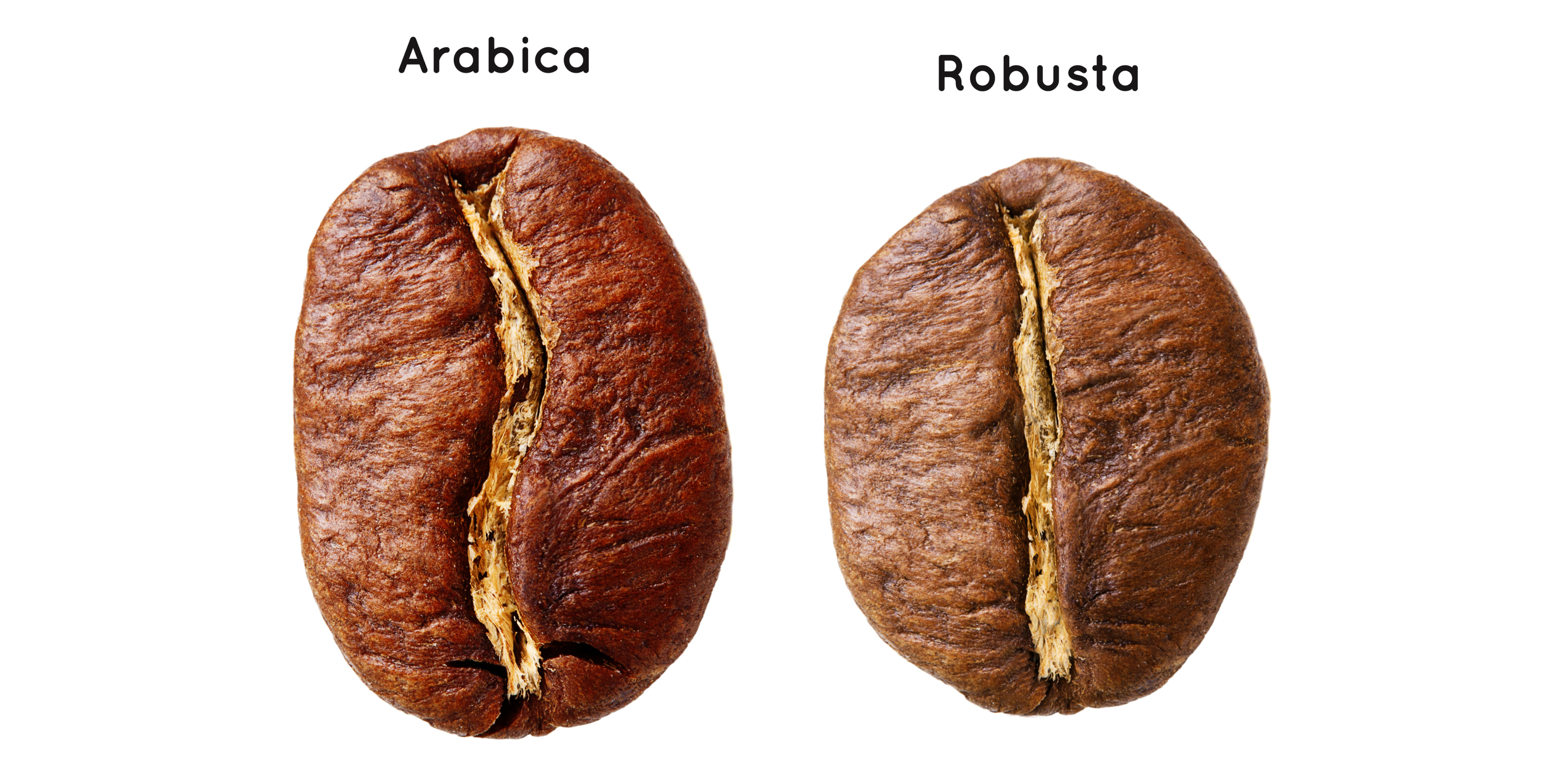Arabica vs. Robusta: What’s the Real Difference?
Not all coffee beans are the same.
The two main types you’ll find in your cup are Arabica and Robusta.
They may look similar, but they taste, grow, and behave very differently.
Here’s what you need to know.
1. Where They’re Grown
-
Arabica grows at high altitudes, mainly in places like Ethiopia, Colombia, and Kenya.
-
Robusta grows in lower, hotter regions like Vietnam and parts of Africa.
Arabica plants are more delicate and harder to grow.
Robusta is tougher and more resistant to pests.
2. Taste and Flavor
-
Arabica is known for smooth, complex flavors.
Think floral, fruity, and sweet notes. -
Robusta tends to taste stronger, more bitter, and earthy—sometimes with a hint of burnt wood or rubber.
If you enjoy nuanced coffee, Arabica is your go-to.
Robusta is better for bold, heavy-bodied brews.
3. Caffeine Content
-
Robusta has about twice the caffeine of Arabica.
-
Caffeine gives it that extra bitterness—and also helps the plant fight off insects.
Want a strong wake-up call? Go for a Robusta-heavy blend.
Looking for a mellow cup with layered flavors? Choose Arabica.
4. Price and Quality
-
Arabica is more expensive. It’s harder to grow and needs specific conditions.
-
Robusta is cheaper and more widely produced.
Most specialty coffee comes from Arabica beans.
Robusta is often used in instant coffee or low-cost blends.
5. Which One Should You Choose?
Choose Arabica if you:
-
Care about flavor and aroma
-
Brew using pour-over, Aeropress, or espresso
-
Enjoy coffee black, without sugar or milk
Choose Robusta if you:
-
Want more caffeine
-
Like your coffee strong and bitter
-
Add milk or sugar to your cup
Many espresso blends use a mix—Arabica for flavor, Robusta for crema and strength.
Bottom Line
Arabica = smoother, sweeter, more complex.
Robusta = stronger, cheaper, more bitter.
Both have their place.
It depends on what you want in your cup.
Next time you buy beans on notjustbeans.shop, check the variety.
It makes a big difference in how your coffee tastes.

